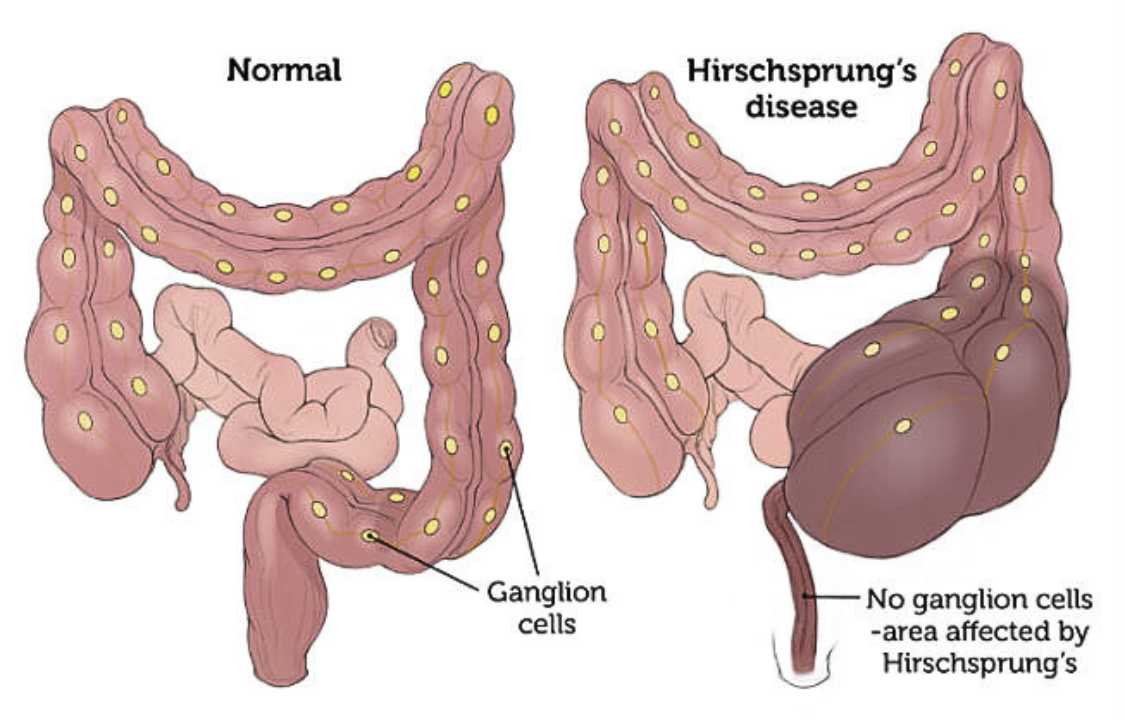The process of digestion and excretion is fundamental to life. From the moment of birth, it plays a crucial role in our existence. While the topic of excretion might not be a popular one for casual conversation, it’s undeniably important for our overall well-being. The journey of excretion begins at the very inception of life, as even newborns must pass their first stool, known as meconium. However, not all babies transition into this phase smoothly, and some may encounter a condition called Hirschsprung’s disease.
Hirschsprung’s disease, a congenital disorder, is characterized by the absence of nerve cells in the large intestine, resulting in impaired bowel movements. This condition is present at birth and is generally identified in the early stages of an infant’s life. The exact causes of Hirschsprung’s disease remain unclear, but researchers believe it is related to genetic factors and possible flaws in DNA instructions. Fortunately, modern medicine has advanced to the point where surgical interventions can effectively treat Hirschsprung’s disease, allowing children affected by it to lead relatively normal and healthy lives.
The Origins of Hirschsprung’s Disease
Hirschsprung’s disease begins to take hold during the early months of fetal development. As a baby grows and develops, nerve cells typically form throughout the entire digestive system, starting from the esophagus, which connects the mouth to the stomach, and extending all the way to the rectum. In a healthy individual, these nerve cells, numbering up to 500 million, play a critical role in facilitating the movement of food through the digestive system, from the beginning to the end.
However, in a baby with Hirschsprung’s disease, the formation of nerve cells is halted at the end of the large intestine, just before the rectum and anus. In some cases, these nerve cells are also missing at other locations within the digestive system. Consequently, the body is unable to sense when waste material reaches a specific point, leading to the accumulation of waste material and blockages within the system.
Hirschsprung’s disease is relatively rare, affecting about one in every 5,000 newborns. Some children with congenital conditions, such as Down syndrome or heart defects, have a higher likelihood of developing Hirschsprung’s disease. Additionally, parents who carry the genetic predisposition for this disease may pass it on to their children, with a higher incidence observed among boys. The disease was named after Harald Hirschsprung, a 19th-century Danish doctor who meticulously described this condition in 1888.
Recognizing the Symptoms
For the majority of individuals affected by Hirschsprung’s disease, symptoms typically manifest within the first six weeks of life, with many cases presenting signs within the first 48 hours. These symptoms can include abdominal swelling, absence of bowel movements (especially a concern if meconium is not passed within the first few days), chronic constipation in older children, bloody diarrhea, which can lead to a life-threatening infection called enterocolitis, as well as vomiting (often green or brown in color). In older children, symptoms might also encompass growth issues, fatigue, and severe constipation.
Diagnosis and Testing
If a child displays symptoms of Hirschsprung’s disease, it’s crucial to contact a doctor promptly for a thorough evaluation. The diagnosis of Hirschsprung’s disease involves several specific tests:
- Contrast Enema (Barium Enema): In this test, the child is positioned face-down on a table, and a contrast dye, often containing barium, is introduced via a tube inserted through the anus into the intestines. This procedure, also referred to as a “lower GI series,” enables the doctor to visualize any problem areas within the gastrointestinal tract.
- Abdominal X-Ray: This standard X-ray is taken from various angles to determine if there are obstructions within the intestines.
- Biopsy: A small tissue sample is extracted from the child’s rectum and examined for signs of Hirschsprung’s disease. Depending on the age and size of the child, anesthesia may be used during this procedure.
- Anorectal Manometry: Typically performed on older children, this test involves inflating a small balloon inside the rectum to assess the responsiveness of the muscles in the area.
Treatment Approaches
Hirschsprung’s disease is a serious condition, but when diagnosed and treated in a timely manner, children can lead relatively normal lives. The primary treatment for this condition typically involves one of two surgical procedures:
- Pull-Through Procedure: During this surgery, the section of the large intestine lacking nerve cells is removed, and the remaining intestine is connected directly to the anus.
- Ostomy Surgery: In this surgical approach, the intestine is directed to an opening created in the body. An ostomy bag is then attached to the outside of this opening to collect waste from the intestine. Ostomy surgery is often a temporary solution until the child is ready for the pull-through procedure.
Following surgery, some children may experience issues such as constipation, diarrhea, or incontinence. In some cases, enterocolitis may occur, marked by symptoms like rectal bleeding, fever, vomiting, and abdominal swelling, necessitating immediate medical attention. However, with proper care, including a well-balanced diet and adequate hydration, these conditions should gradually improve, and most children can expect to regain normal bowel function within a year of treatment. It’s essential to note that Hirschsprung’s disease is a congenital condition, signifying that it requires lifelong monitoring.
In summary, while Hirschsprung’s disease presents a challenging diagnosis, early intervention and proper medical care can allow affected children to lead fulfilling lives. Ongoing follow-ups and a multidisciplinary approach involving healthcare professionals, parents, and caregivers are instrumental in managing this congenital condition and ensuring the well-being of the child. The journey may entail its share of challenges, but with the right support and care, children with Hirschsprung’s disease can thrive and enjoy the joys of childhood and beyond.

